President Franklin Pierce
Franklin Pierce was a lawyer, politician, and war veteran before becoming the 14th President of the United States. Pierce was born in a log cabin on Nov. 23, 1804, in Hillsboro, N.H. He was one of eight children. His father, Benjamin, was a Revolutionary War veteran who fought at the Battle of Bunker Hill and later found success in politics, winning the governorship of new Hampshire. 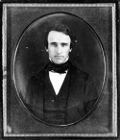
Franklin attended public schools and then a private academy before enrolling in Bowdoin College in Maine, where he met future famous authors Nathaniel Hawthorne and Henry Wadsworth Longfellow. Pierce found school difficult initially but dedicated himself to his studies and graduated near the top of his class. He went on to law school and passed the bar in 1827. Pierce, like many in early America, made the transition from the law to the statehouse, winning a seat in the New Hampshire State Legislature in 1829. He won election to the federal level as well, serving first in the House of Representatives and then in the Senate. Pierce served two terms in the House, from 1833 to 1837, and then one term in the Senate, from 1837 to 1842. He was a steadfast supporter of Andrew Jackson and, in reference to Jackson's nickname of "Old Hickory," found himself being referred to as "Young Hickory of the Granite Hills." In 1834, he married Jean Appleton. They had three children: Franklin, Jr., Frank, and Benjamin. Jean Pierce didn't much care for the Washington, D.C., lifestyle and convinced her husband to resign in 1842, before his Senate term was up. They returned to a quieter life in New Hampshire. 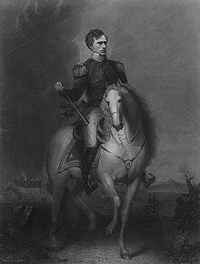
Pierce volunteered to serve in the U.S. Army when the Mexican-American War began. A capable soldier, he rose to the rank of brigadier general and served under General Winfield Scott, accompanying the Army to Veracruz and then, eventually, to Mexico City. Pierce was wounded during the Battle of Contreras when his horse fell on his leg. Undeterred, he ignored his crippling knee pain and had himself tied to his horse in order to lead his men into the fray again, at the Battle of Churubusco. It was yet another victory for the Americans. Pierce was with Scott's forces for the duration of the war. Pierce became the leader of the N.H. Democratic Party and gained an element of national prominence. The national Democratic Party nominated Pierce as its presidential candidate in 1852. Pierce, running against his former commander, Winfield Scott, won the presidency. 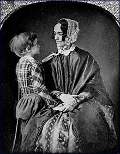
Two months before Pierce took office, he and his family were in a train wreck, which killed their 11-year-old son Bennie. He was their third son to die before reaching adulthood. One had died in infancy, and the other had died at age 4. The train wreck was particularly gruesome. Both parents suffered from severe depression after that. 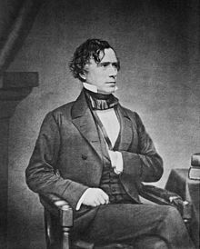
Slavery was not often far down the list of contentious issues at this time in American history, and it certainly reared its head during Pierce's presidency. He signed into law the Kansas-Nebraska Act, which championed the idea of Popular Sovereignty–leaving up to the residents of a territory and, eventually, new state whether they could allow slaves. The resulting struggle over sovereignty in the more southern of those two territories led to its being called "Bleeding Kansas". Pierce was suspicious of the abolitionist movement, viewing it as a threat to the relative peace that existed in the nation at the time, thanks to the Compromise of 1850. Morally opposed himself to slavery, he nevertheless thought that federal laws aimed at curtailing slavery were a violation of the rights of the individual states. He also tended to listen to his Southern advisors, including Secretary of War (and later President of the Confederacy) Jefferson Davis, more than some of his Northern colleagues thought that he should. He also lacked the support of his Vice-president. William Rufus King, who had been Pierce's running mate during the campaign, was gravely ill in early 1853 and missed the inauguration. He died in April 17. No one filled the position because the Constitution had no provision for doing so. Pierce fell out of favor with his own political party and was passed over for the Democratic nomination for President in 1856. That choice was, instead, James Buchanan, who won the presidency. Pierce returned to New Hampshire, to Concord, and retired from public life. Pierce had more success in the international arena:
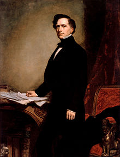
Pierce largely refrained from commenting on the turbulent events that followed his presidency. He did urge the Democratic Party to unite behind one candidate for the Election of 1860; they did not, and Abraham Lincoln won. Pierce did speak out against the Civil War and against Lincoln's Emancipation Proclamation. Pierce's wife, Jane, died in 1863. He died on Oct. 8, 1869, in Concord, N.H. President Ulysses S. Grant declared a national day of mourning. |
|
Social Studies for Kids
copyright 2002–2026
David White


